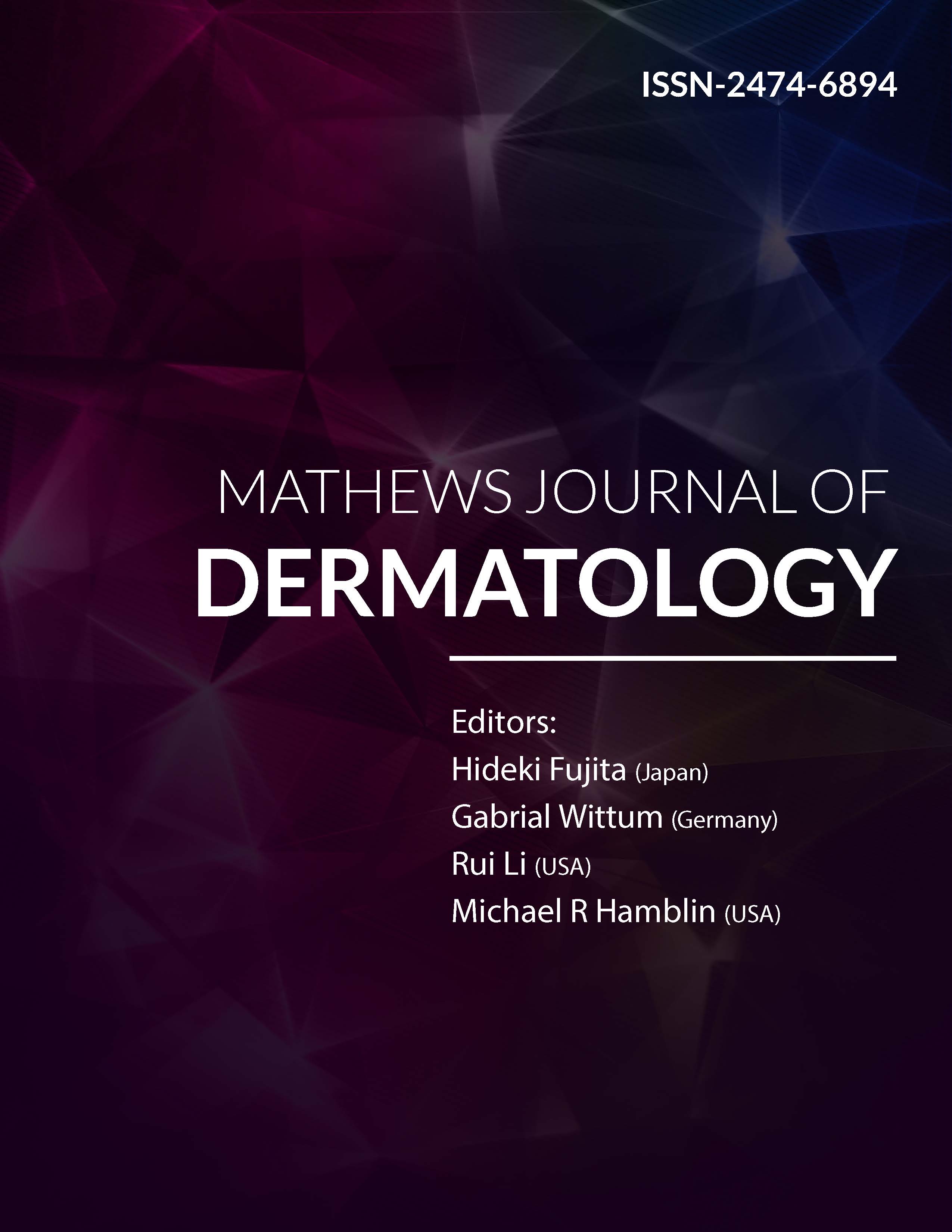
Information Links
Previous Issues Volume 7, Issue 1 - 2023
A Retrospective Study on Dermatophte Infections In-Relation to the Age, Sex, Site of Infection and In Asmara, Eritrea
Yohanes Qelit*
Unit Head of Quality Assurance, Eritrean Marine resource, Massawa, Eritrea
*Corresponding author: Dr. Yohanes Qelit, Unit Head of Quality Assurance, Eritrean Marine resource, Massawa, Eritrea. Tel: 2917243076; Email: [email protected].
Received Date: March 30, 2023
Published Date: April 10, 2023
Citation: Qelit Y, et al. (2023). A Retrospective Study on Dermatophte Infections In-Relation to the Age, Sex, Site of Infection and In Asmara, Eritrea. Mathews J Dermatol. 7(1):18.
Copyrights: Qelit Y, et al. © (2023).
ABSTRACT
Background: Diseases related to superficial skin fungal infections are becoming a leading cause of disability. The majority of skin diseases are caused by different types of Tinea that affect; the beard area, the scalp hair follicles and the surrounding skin, the trunk, the groin, the face, chin and lip, the hand, the webs of the toe and the nails. The prevalence and pattern of these diseases differs among countries because of sex, age, comorbid diseases, the skin type and site of an individual, occupation, climate/geographic area, level of immunity and sociocultural behavior culture. Aim of the study: The aim of study was to investigate the association between superficial fungal infections, and sex and area of infection and other determinants. Patients and Methods: A five year (2014 to 2018) retrospective study on the prevalence of superficial fungal skin infections and its determinants of outpatients who attended dermatologic Clinic at Halibet National Referral Hospital, Asmara, Eritrea was conducted. Results: During the past five years Period (2014, - 2018) the Dermatology clinic of Halibet Hospital had a total visit of 5524 outpatients with a superficial skin fungal/Tinea infections. Out of these outpatients head [77.5% (n=4280)]. It was found to be the highly infected area mainly in females 53.1% (n=2272). The results of the study showed a significant association between area of infection and sex (female) at p-value <0.000. Tinea skin fungal infections were found to be common in the highlands area of the country that is with cold climate than the areas with hot climate. The study revealed a significant association (p-value < 0.000) between area of infection and geographic location (residential area) of the study participants. The frequency of disease and comorbidity of different Tinea skin fungal infections was found to be higher in females than males and a significant association was also observed at p-value < 0.00. Conclusion: In Conclusion the study have revealed that the Tinea/superficial skin fungal infections are more common on the head and females. The results are significantly associated with female sex and cold climate or highlands area [geographic location (residential area)] at a p-value <0.000 and p-value < 0.000, respectively. The frequency of disease and comorbidity of different Tinea skin fungal infections was found to be higher in females than males and a significant association was also observed at p-value < 0.00.
Keywords: Dermatophytes, Sex, Climate, Tinea, Eritrea.